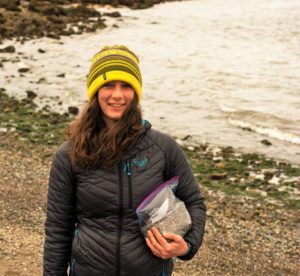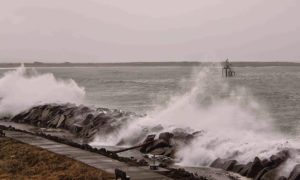How does Washington clean up hazardous waste?
Thirty-one years ago, a group of visionary citizens rallies support for a ballot initiative to protect the health of Washington state’s people and environment from toxic chemicals. Voters passed the initiative into law and it became what we now know as the Model Toxics Control Act, or MTCA (pronounced mot-cah) for short.
MTCA is known as Washington’s “cleanup law.” It governs the cleanup of sites that have been contaminated by hazardous substances that threaten the health of people and the environment. MTCA’s goal is “to raise sufficient funds to clean up all hazardous waste sites and to prevent the creation of future hazards due to improper disposal of toxic wastes into the state’s lands and waters.” (RCW 70.105D.010).
When MTCA was enacted in the late 80s, there were 250 contaminated sites in Washington state. Today there are well over 13,000 contaminated sites recorded by Ecology. Bellingham Bay alone has 12 sites, all in varying stages of cleanup, some of which were listed when MTCA came to be and are still waiting on a final cleanup.

Cornwall Avenue Landfill cleanup site on Bellingham waterfront. Future site of public Cornwall Beach Park.
It’s time for an update
A lot has changed since the 80s.
- We’ve gained a better understanding of how the cleanup process works;
- We now recognize the shear volume of contaminated sites being added to the list on an annual basis (about 300 per year);
- We have a better understanding of the role environmental justice plays in the highly impacted communities on or adjacent to these cleanup sites;
- We better understand how things like climate change may impact the performance of a cleanup remedy.
After nearly twenty years, MTCA is finally undergoing an update process — taking into account these considerations and more. Twenty-five individuals representing environmental consulting, cities, ports, tribes, industries, banks, universities, and environmental community nonprofit groups make up the membership of the advisory group leading the update. Ecology selected the group known as the Stakeholder and Tribal Advisory Group (STAG) through an application process aimed to cultivate a diverse set of stakeholders all impacted by contaminated sites.
Bellingham Bay’s stakeholders are represented by me, your North Sound Baykeeper! And I am committed to making sure environmental justice and climate change considerations are incorporated into cleanup law through the MTCA update process. I have worked hard over the past several years to make sure these cleanups represent our community’s best interest, and effectively protect the Salish Sea and its uplands.

Eleanor Hines, North Sound Baykeeper at RE Sources
To coordinate the complexities of 12 cleanup sites I attend the quarterly meetings of the Bellingham Bay Action Team (BBAT), a group of 14 federal, state, tribal and local stakeholders. My team of scientists at RE Sources review all technical documents during public comment periods. We carefully scrutinize, and look for opportunities to improve conditions for the Salish Sea and our Bellingham community. We also host site tours and other events to familiarize the public with these cleanup sites, their cleanup plans, and future uses, and to encourage the public to participate in the cleanup of our waterfront.
Making environmental justice part of the law
Along with Citizens for a Healthy Bay, the Duwamish River Cleanup Coalition, and Washington Environmental Council, we’re pushing for the updated MTCA rule to incorporate environmental justice and climate change in a way that will actually reduce the burden of these contaminated sites on impacted communities. We’re asking Ecology to prevent these disproportionate burdens from carrying on into the future, and to ensure when these sites are cleaned up, gentrification doesn’t become the next issue.
RE Sources and partners are encouraging Ecology to:
- Take into consideration the disproportionate number of MTCA sites located in communities of color, and prioritize sites located in highly impacted communities for financial assistance for cleanups.
- Ensure consistency, transparency, and use more public input to determine how the cleanup remedies will impact the public.
- Take socioeconomic information into consideration when prioritizing the urgency of sites.
- More effectively communicate with impacted communities throughout the process.
- Consider cumulative impacts by prioritizing highly impacted communities that possess multiple sociodemographic factors for the environmental justice flag.
- Take impacted communities into greater consideration when determining cleanup remedies.
- Improve the definitions of overburdened communities and disproportionate effects.
- Ensure that disproportionate effects are taken into account for the whole process, including prioritizing which sites are cleaned up and which cleanup remedies are selected.
- Track and report separately on progress made towards cleanups for all sites that trigger the six sociodemographic factors of the environmental justice flag.
- Incorporate milestones and reporting into the rule to provide accountability and to ensure progress is made towards environmental justice goals.
There are many other recommendations. Here are a couple excerpts taken from the letter of our group’s recommendations:
Highly impacted communities should be considered even if the site is not geographically located in the community. For example, a workplace, cultural or other public center, or a park that is frequented by a highly impacted community may not fall within the geographic boundaries of such a community to normally be considered, but the community is still being impacted. Communities may also be affected by a contaminated site that impacts the fishing ability of certain communities who may not reside within or adjacent to the contaminated site. The impact of MTCA sites to communities is not limited to communities geographically adjacent to a site, therefore effects should be considered more broadly. This provision must also extend to consider the impacts of MTCA sites throughout the Usual and Accustomed areas of Tribes.
We recommend Ecology consider the wide range of effects MTCA sites have on the community. This includes, but is not limited to, effects to health status and outcomes, food accessibility including fish consumption, drinking water, recreational activities, and social practices and activities. Ecology should look at all of the above effects for each of the exposure pathways assessed in SHARP.
SHARP stands for Site Hazardous Assessment and Ranking Process, which is the proposed new system to assess and prioritize sites for cleanup.
Read the STAG comment letter to see the full list of our recommendations.
Including climate change impacts
Climate change is another emerging issue with cleanup sites. As climate continues to change, we are starting to see a higher convergence of what used to be considered natural disasters, but are now becoming more of the new normal.

Climate change impacts, including sea level rise and more severe storms, are important considerations for MTCA.
For example, a cleanup site may now be much more likely to experience a storm surge along with severe flooding of a river. The two combined could compromise what had been previously considered a permanent cleanup action. These cleanups are extremely expensive and no one wants to have an additional, expensive cleanup to fix the failed cleanup. We need to start making adjustments in our policies and rules to ensure that we are more resilient in the future as we face the costly perils of climate change. We are working with others, including Ecology, on how to best incorporate climate change into the considerations for cleanup remedies.
What you can do to help
These cleanup sites impact all of us. All of us who live in Washington State are MTCA stakeholders. So if you are interested in what you can do, here are some suggestions:
- Find out more about the MTCA STAG process. Anyone is allowed to attend meetings and submit public comments.
- Attend a tour or education event with RE Sources.
- Check out What’s in My Neighborhood to find out what sites may be near you. Or check the Hazardous Sites List.
- Learn more about the Bellingham Bay cleanup effort
- Sign up for email updates about Bellingham Bay cleanups.
- If you’re interested in a couple tools that are used in identifying environmental, health, and demographic indicators, check out EPA’s Environmental Justice Screening and Mapping Tool and Washington State Department of Health’s Information By Tracking Tool.
- Reach out to your North Sound Baykeeper or Ecology staff Ian Fawley — we’d love to talk to you!
Take a self-guided tour of Bellingham’s waterfront
There are 12 toxic cleanup sites along Bellingham Bay from over 100 years of industrial activity. Use this interactive map to explore their history and how they’re being cleaned up for future use.
Take a walk, bike, or paddle to these oft-overlooked spots along our waterfront. It’s a great way to get outdoors and get connected to this place we call home. Read more about our self-guided tour of Bellingham’s waterfront.

Lime Kiln Lighthouse at Dusk © Buff Black
